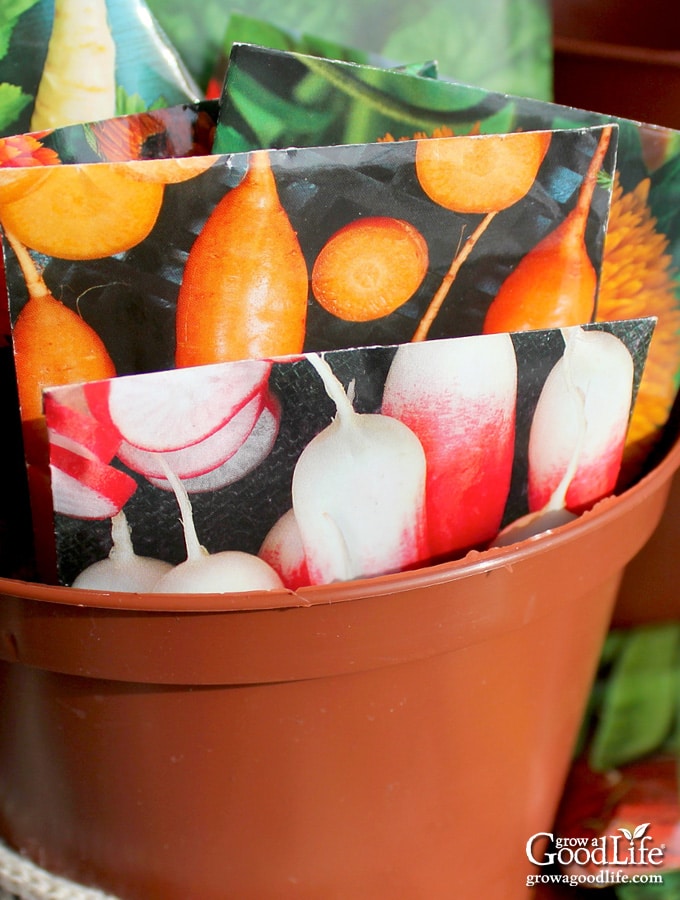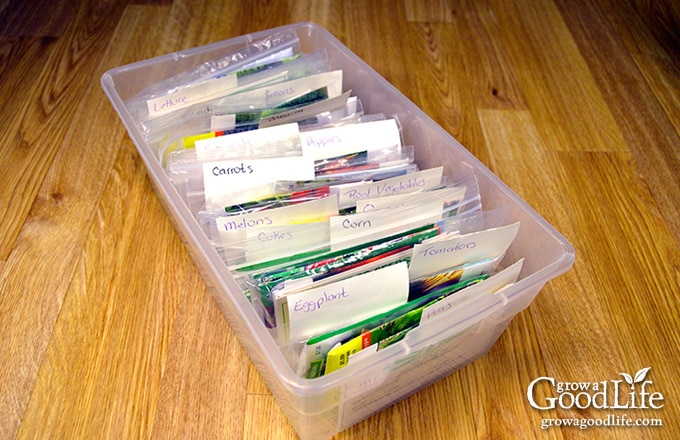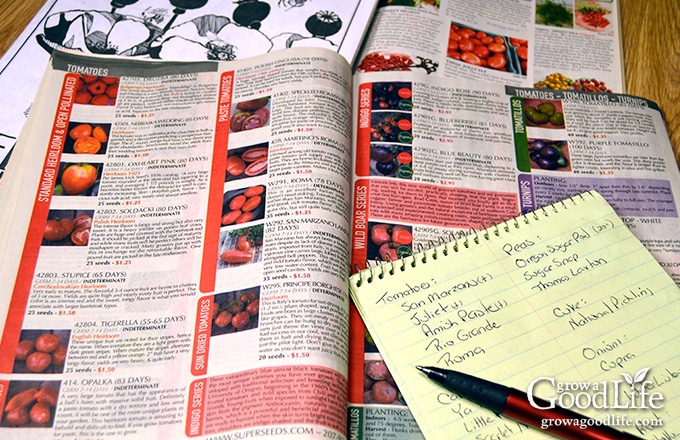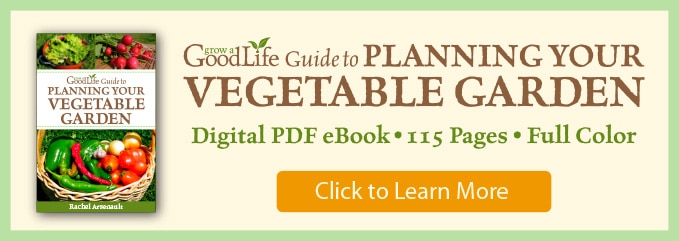Tips for Buying Seeds for Your Vegetable Garden
This post may contain affiliate links, which means that I may receive a commission if you make a purchase using these links. As an Amazon Associate I earn from qualifying purchases.
Successful vegetable gardens begin with good quality seeds. Here are tips to help you organize, plan, and buy seeds for the upcoming growing season.

There is nothing more exciting to a gardener than planning the next growing season. Even though it is cold outside, my heart warms at the thought of planning the garden, starting seeds under lights, and digging in the dirt even on a small scale.
I enjoy paging through the seed catalogs and marking the things that interest me. This usually results in more crops than I could ever grow in a lifetime, so the process of trimming down the list to more realistic goals begins.
Tips for Buying Garden Seeds
Before you can start planting, you will need to figure out what you want to grow and order seeds. Here is my yearly routine for buying seeds and some tips I have learned along the way.
Organize Your Seeds
If you are like me and are eager to kick off your gardening season, you probably have a list of things you want to grow, or maybe even a pile of leftover seed packages. It is time to get things organized so you know what you have on hand and what you need to purchase.
I store my seeds in two shoe box sized totes, flower and herb seeds in one, and vegetables in the other. The seed boxes are divided into sections (i.e. tomatoes, peppers, onions, lettuce, squash, etc.) with index cards and labeled. Each seed packet is stored in a zipper bag to keep it dry. I organize the seed boxes by filing the seed packs into the correct sections. Once this is complete, I spread out each group on the table like playing cards. I review the packages to see how many seeds they contain, check the dates, and jot down the information.

Test Older Seeds
As you organize your seed packages, check the dates on the packages. Depending on how the seeds are stored, most seeds are viable for several years. The list below will give you a general idea how long vegetable seeds will last:
- 1 Year: Leeks, onions, parsnips, and scallions
- 2 to 3 Years: Arugula, beans, carrots, celeriac, celery, corn, eggplant, lettuce, okra, peas, peppers, and spinach
- 3 to 4 Years: Artichokes, beets, broccoli, Brussels sprouts, cabbage, cauliflower, collards, kale, kohlrabi, mustard, pumpkin, radish, rutabagas, summer squash, Swiss chard, and winter squash
- 5 to 6 Years: Cucumbers, melons, tomatoes, turnips, and watermelons
If you do have older seeds and wonder if they are still good, try a seed germination test to find out if they will sprout and grow come planting time. This article illustrates the steps to testing seed viability:
Take Inventory and Make Garden Seed List or Two
Now that your seeds are organized, it is a good time to go through your seed stash, take inventory, and make a list of what you have, and what you need.
I usually begin my list with the tomato category because tomatoes are an important staple in my garden. We enjoy tomatoes fresh during the growing season, but the bulk of the crop is preserved to enjoy all winter.
I rely heavily on paste-type tomatoes that are great for preserving, such as San Marzano, Roma, Amish Paste, and Juliet. So it is important I have plenty of seeds on hand. I spread the packages out in front of me, check the dates, make sure I have enough inventory of fresh seeds for the season. Each tomato variety I want to grow is added to a list.
I keep two seed lists going as I move from section to section of my seed box. One is a list of the plant varieties of each category that I would like to grow, and the other is a list of garden seeds I need to purchase.

Decide What You Want to Grow
Think about the types of vegetables you want to grow. Focus on what you enjoy eating as you flip through the pages of your seed catalogs and sort through your inventory of seeds.
If you love salads, then lettuce, spinach, cucumbers, and tomatoes would be obvious choices to grow in your garden. If you enjoy fresh salsa, be sure to include peppers, onions, tomatoes, and cilantro on your list. Herbs are very beautiful and add a pop of flavor to your cooking so tucking a few plants into your garden or containers is also a good idea.
Targeting your objectives will help you choose vegetables that will make the most of your garden. Here is an article that may help:
Narrow Down Your Choices
Now that you have taken inventory, made a list of things you want to grow, it is a good idea to figure out how to fit everything in your garden.
The easiest way to do this is to sketch a rough layout of your vegetable garden, and plot out where things will be planted. It doesn’t have to be exact, but it will give you an idea of the space you have to work with and how many plants your garden will hold throughout the growing season. Plan out your harvest from spring, summer, and fall.
Order Seeds Early
Growing your own vegetables, fruit, and herbs has become more popular over the past several years, and seed companies have struggled to keep up with the demand. Sometimes they sell out of seeds quickly. The earlier you can get your seed order in, the faster the seeds will be shipped to you. Also consider ordering extra for the next year just in case of shortages.
Buy Seeds from a Trusted Source
Local feed stores and farmers’ co-ops have a great selection of seeds that grow well in your area. You’ll find traditional seed packages, but most also have the options of buying seeds by the scoop too. Buying seeds in bulk is more economical, especially when purchasing a larger quantity such as beans, corn, peas, and cover crops.
While local feed and farm stores offer the basics, you can turn to online seed companies for more variety. The following seed companies are ones that I have had personal experience with and can recommend highly. All have signed the Safe Seed Pledge committing to offer only non-GMO seeds. Here are my favorite places to buy high-quality seeds online:
- Fedco Seeds is a Maine cooperative seed and garden supply company that has operated since 1978. The seeds I have ordered over the years have always been high quality. Fedco is a great source of certified-organic cultivars and regional heirloom varieties.
- Pinetree Garden Seeds is a family owned and operated business out of New Gloucester, Maine. Pinetree Garden Seeds was founded in 1979 with a mission to offer high quality seeds in smaller quantity seed packages that are affordable and more manageable for a typical home gardener. Offerings include heirloom seeds, gardening tools, books, live plants, and soap making supplies.
- Botanical Interests: You have likely spotted the beautifully illustrated seed packages at your local farm or hardware store. Not only are they pretty, but also each package contains detailed sowing and growing information for each seed variety. The seeds I have planted have had very good germination and produced healthy plants.
- Johnny’s Selected Seeds is an employee owned Maine seed company originally established in 1973 that offers a wide variety of certified-organic, hybrid, open-pollinated, and heirloom vegetable, herb, and flower seeds. Seeds I have ordered have high germination rates and produce healthy plants.
- Territorial Seed Company is a family owned company in Cottage Grove, Oregon. They have a very good reputation for quality seeds and customer service. Their catalogs are a wealth of information for growers, and they carry many unique varieties.
- Baker Creek Heirloom Seeds got its start in 1998 in Mansfield, Missouri as a small company that focused on heirloom seeds. It has grown into the largest heirloom seed company in North America. They encourage seed saving and sharing.
- High Mowing Organic Seeds began as a one-person operation in Wolcott, Vermont offering just 28 varieties in 1996. Today, it offers over 600 heirlooms, open-pollinated and hybrid varieties of vegetable, fruit, herb, and flower seeds. The seeds are good quality and have great germination rates.
- Seed Savers Exchange is a unique seed company that formed in 1975 with the goal to protect and preserve heirloom varieties instead of breeding seeds to be hearty and easier to grow. It has grown to maintain a collection of over 20,000 different varieties of heirloom and open-pollinated plants.
How to Store Garden Seeds
Many seeds will keep for years if they are stored in a dry location in a cool area between 40 and 50˚F. I store my seeds in a dark corner of the basement away from the furnace. If pests are a problem, you can place the seed packets in sealed glass jars.
—-
Winter is the perfect time to plan your vegetable garden. Start by organizing your seeds so you can take inventory, test older seeds for germination, and make a list of seeds you need, and buy your seeds locally or online. Once spring comes there is so much to do. It is helpful to have your seed inventory ready when it is time to plant them.
The next steps to planning your vegetable garden is plotting the garden beds to help you figure out how many transplants to grow, and setting up a seed starting and planting schedule so you know when to start your seeds and plant your vegetable garden.
You May Also Like:
- 10 Steps to Starting Seedlings Indoors
- How to Use Grow Lights for Seedlings
- 8 Easiest Vegetables to Grow
Good planning is key to a successful vegetable garden
Whether you are new to growing your own food or have been growing a vegetable garden for years, you will benefit from some planning each year. You will find everything you need to organize and plan your vegetable garden in my PDF eBook, Grow a Good Life Guide to Planning Your Vegetable Garden.


I’m so glad I found your website! I can’t wait to start planting in my garden and had no idea how much planning or preparation is needed. Because of your easy to follow steps and links, I have started my new gardening composition notebook where I will draw my garden bed maps, keep notes about how well my different plants grew, and list what I will do next time. I would be so disorganized and lost if I hadn’t found you! Thank you for the plethora of knowledge.
Great post! I need to get my ideas down on paper. I am so excited to start planning my garden for the year, I just never seem to be organized enough. Thanks for the tips! ~Lisa M